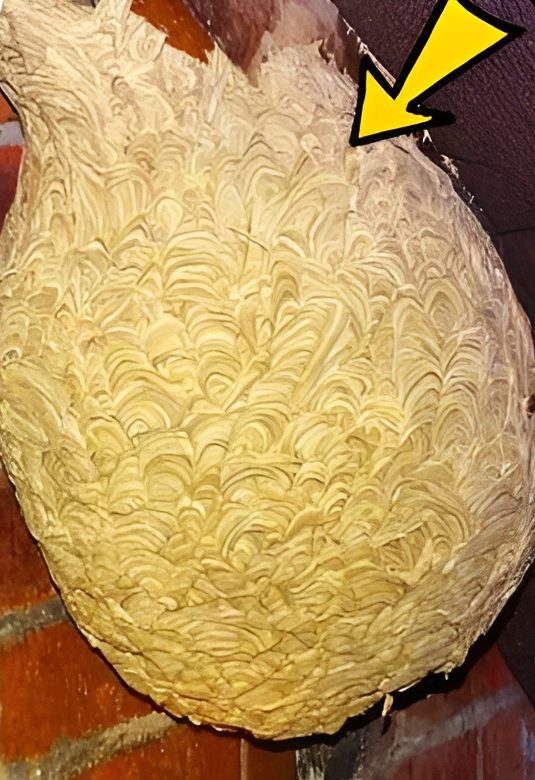A seemingly normal day took a harrowing turn when James heard his son Liam screaming from the attic.
In May 2018, landscapers were called in to install deer-resistant bamboo and, in the process, remove damaged trees and gain access to the enigmatic metal box.
To their amazement, the metal box was not just any electrical device, but the entrance to a huge hornet’s nest.
James and Liam were amazed by the size of the hornet’s nest and the unusual noise it made, reminiscent of a car engine trying to start.
Seeking professional help, James contacted a hornet control expert who, upon arriving on site, was confident he could handle the situation.
Despite repeated attempts to enlist the help of other pest control companies, James was advised time and again to wait until winter to find a solution.

When he learns of Liam’s audacity, James is both proud and concerned for his son’s safety. However, the discovery of the hornet’s nest complicates matters and leads to a tense confrontation between James and his wife, Emma.
Emma’s shock and anger are directed not only at the disturbing contents of the hornet’s nest, but also at James for hiding it for years.
Here’s some more information about hornets:
Hornets are a type of wasp belonging to the family Vespidae. They are larger than typical wasps, with some species, like the European hornet, growing up to 1.5 inches long. Here are some key points about hornets:
- Nesting: Hornets build nests out of paper-like material made from chewed wood fibers mixed with saliva. These nests can be found in trees, shrubs, or even under eaves of buildings.
- Social Behavior: Hornets are social insects, living in colonies that can consist of hundreds to thousands of individuals. They have a queen, workers, and drones, each with specific roles.
- Diet: Hornets primarily feed on other insects, making them beneficial for controlling pest populations. They also enjoy sugary substances, which can attract them to picnic areas or garbage.
- Aggressiveness: While hornets are generally not aggressive unless provoked, they can defend their nests vigorously. Multiple hornets can sting at once, which can be particularly dangerous.
- Sting: Their sting is painful and can cause swelling and redness. For those allergic to their venom, stings can lead to severe reactions, so it’s important to be cautious around them.
There are different species of hornets. Some of the most well-known species include:
- Bald-Faced Hornet (Dolichovespula maculata): This species is known for its distinctive black and white coloration and is commonly found in North America. They build large, aerial nests.
- European Hornet (Vespa crabro): This is the largest true hornet in Europe and has a yellow and brown coloration. They can be found in various habitats and are known for their aggressive defense of their nests.
- Asian Giant Hornet (Vespa mandarinia): Known as the “murder hornet,” this species is native to Asia and has gained attention due to its size and potent sting. They are a threat to honeybee populations.
- Yellow Hornet (Vespa squamosa): This species is found in the southeastern United States and is known for its yellow and black coloration. They build nests in trees and shrubs.
Each species has its own behavior, nesting habits, and level of aggressiveness, but they all share common traits as social insects. If you want more details about a specific species, let me know!
Hornets can be dangerous to humans, especially if they feel threatened or if their nest is disturbed. Their stings can be quite painful and may cause allergic reactions in some people. In severe cases, a hornet sting can lead to anaphylaxis, which is a life-threatening condition. It’s best to avoid provoking them and to seek medical attention if stung, especially if you experience symptoms like difficulty breathing or swelling.
